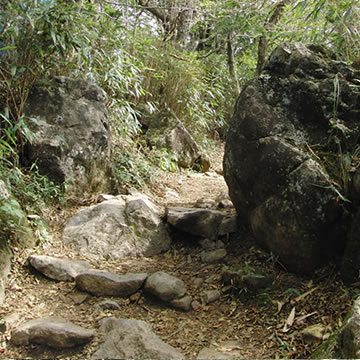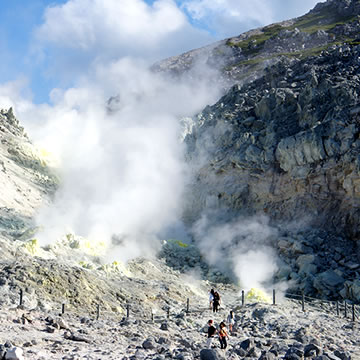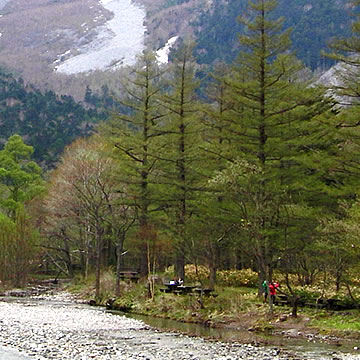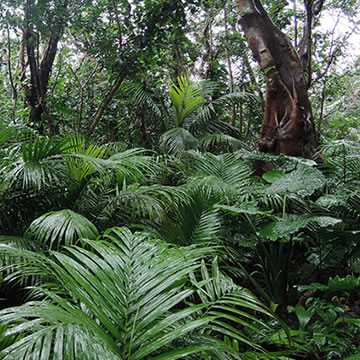Hiking in Japan (1) : About mountains and the enchantments
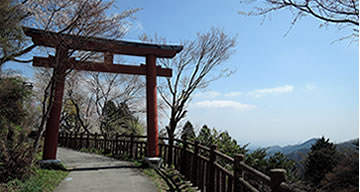
What do you want to do next after having done all the sightseeing in Japan? Where else do you want to go other than typical touristy spots? Now here is an idea, hiking.
About Mountains in Japan
Hiking in Japan allows you to not only enjoy the scenery in a natural setting but also discover unique Japanese culture created in history. Hiking can even be a highlight of your travel experiences in Japan, which is actually attracting the interest of many tourists from abroad. So, here let me give you an outline of mountains in Japan, the feature, and uniqueness.
Japan is mountainous, has many mountains with well-formed hiking paths
About 70% of Japan is a mountainous land where mountains surround most cities. Even Tokyo Prefecture has a mountainous area in the west, just one hour away by train from central Tokyo. As there are hiking trails on mountains near tourist sites, it is not difficult to plan a tour combining sightseeing, hiking, and Onsen spa bathing at Ryokan.
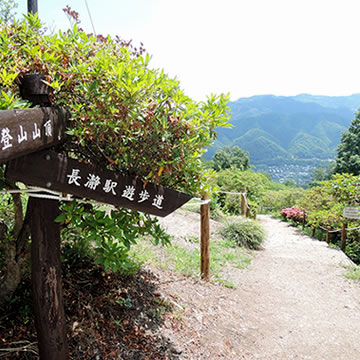
Hiking path on Mt. Hodo, Chichibu Nagatoro, Saitama Prefecture
Various trails are laid out for beginners and experienced hikers alike.
Both small and large mountains have hiking paths, some are good for day-hike, and some others are good for trekking. Hiking routes for beginner/intermediate hikers are provided on small mountains at an altitude of 1000m or lower, some of the paths are well-formed for older people to be walkable. For example, there are hiking trails on those middle-high mountains near Mt.Fuji, where hikers revel in the majestic view up there - as if some people said: “Mt.Fuji is not a mountain to climb, but to view, instead.”
The mountains over 1500m high have trails for intermediate or experienced hikers. The starting point of trekking on high mountains are often reachable by bus or ropeway and has a viewing deck provided for tourists who just want to enjoy viewing up there.
The highest mountain in Japan is Mt.Fuji in 3779m, and the second is the Mt.Kitadake at an altitude of 3193 meters. The mountains at a height between 2500m and 3200m are mostly situated in the central region of Japan’s main island, known as Japan Alps that attracts people for summer trekking. Though the Japan Alps are not as gigantic as the Rocky Mountains in North America, they are wild and steep as having rough routes suitable for challenging hiking that involves climbing.
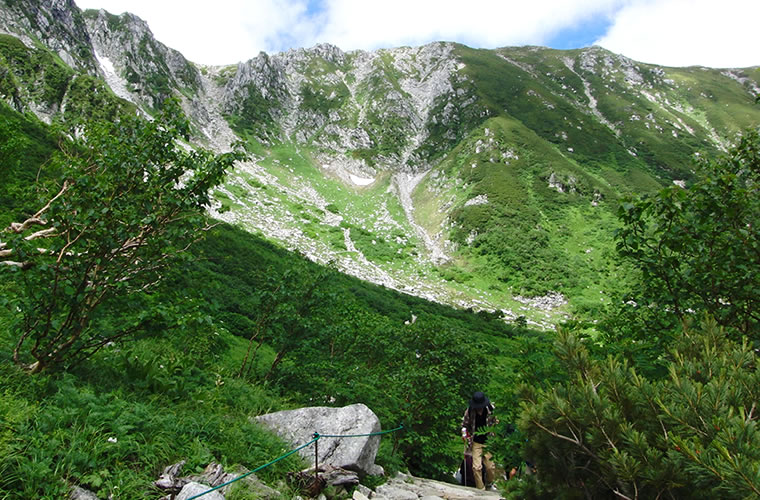
Senjojiki Curl at Kiso Komagatake, Southern Japan Alps
Most of the large mountains are volcanoes
It is scary but thrilling to gaze into a summit crater, indeed. In Japan, the large, well-known mountains over 1500m* are mostly volcanoes. (*Only as a guide. There are also volcanoes even lower.) One of these volcanos can be described as an example is Mount Fuji, formerly designated as a dormant volcano and is now identified as an active volcano to avoid people misunderstand that Mt.Fuji will no longer erupt.
Japan Meteorological Agency observes active volcanos, including Mt Fuji, forbid any hikers from going into the volcano if they predict potentially hazardous situations. Still, hikers should be aware that no one can predict any eruption 100% accurately. Hikers themselves always need to be prepared in mind, with knowledge, and equipped in case of emergency.
Blessed with Onsen Hot Springs
How glad you will be to soothe your body at a hot springs spa after hiking. Thankfully, Japan has many Onsen (hot springs), and good Onsen resorts are found near mountains having hiking trails. In fact, Onsen spa is a highlight of hiking in Japan, and some hikers go hiking to enjoy Onsen afterwards, what they plan is to stay at a Ryokan Inn to treat themselves with Onsen spa and authentic Japanese cuisine.
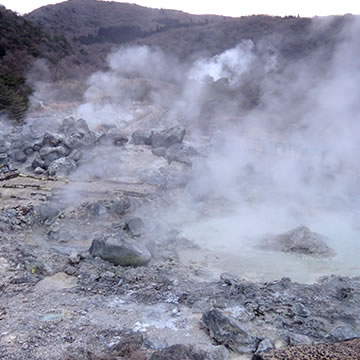
Unzen Onsen in Nagasaki, Kyushu
A variety of plants and trees pleases to the eye region by region, season by season.
Japan is an island nation, elongated in a north-south direction. The north of the country belongs to a subpolar climate, and the southern part lies in the subtropical zone where you can find a wide variety of trees and plants, from fir trees to palm trees. In the northern region, the larch and white birch forest scenery will enchant visitors from south-eastern Asia. In the south, palm trees and mangrove forests in Okinawa will interest European tourists. It is also noteworthy that Japan has four distinct seasons, which dramatically change the view from hiking trails and please to the eye - fresh greenery in spring and colourful leaves in autum
Mountain Worship
Mountains in Japan are deeply concerned with gods, and the mountain worship or Sangakushinko 山岳信仰 has been embedded into the Japanese culture. Some mountains are called Reiho 霊峰 and taken as an object of religious faith.
Since the Sangakushinko has changed and evolved in a long history, it is rather difficult to describe the exact notion. So, the ideas below will help you to get a picture of what Sangakushinko is. The Sangakushinko could be a mixture of three thoughts;.
1.Worshipping mountains themselves as God (Animism)
Since ancient times, there has been in Japan a belief that objects in nature, such as trees, rocks, and mountains, possess spiritual qualities as a god, which leads to the idea that the mountain itself is a god. Based on this belief, people have built little shrines at the summit area of mountains, small in common about H1m x W1m in size, tells hikers finally arrive at the top. Hikers are grateful to the god for arriving safely at the top and pray at the little shrine for going down the mountain safely.
2.Mountain is a sacred site where the god is enshrined
Similar to the Greek myths, many gods also appear in Japanese myths. Since Japanese mythology has merged with the religious faith Shinto 神道, the gods in the myths are enshrined at sacred places which mostly include mountains. People have built a shrine on the mountain where god lives, and the mountain became the object of their worship.
For example, Mt.Fuji has a shrine called Sengen-jinja (also known as Asama-jinja) enshrines the goddess “Konohanasakuyahime コノハナサクヤヒメ”, the name literary means “Princess of Sakura blossoms in bloom. Her older sister is enshrined at Mt.Eboshi in Kumomi Onsen Town on Izu Peninsula. Yes, the god enshrined at mountains is commonly a goddess.
In times past, there were mountains where women were not allowed to go into as it had been said that the goddess gets angry with envy at the woman steps in, and it brings misfortune. Mt.Fuji was actually one of those mountains and the first female who climbed Mt.Fuji in the early 19th centuries was in disguise as a man.
3.Mountains as an ascetic training site to find what you are looking for
Mountain Worship has also merged with Buddhism that brought Shugyodo, the way of self-discipline that includes rigorous training in mountains, such as climbing steep cliffs and meditation under a waterfall (Takiko). Those ascetic practices are called Yamabushi who wears a kind of Japanese priest clothes, looks like a Ninja in white. The ascetic training such as meditation under a waterfall can be experienced at some mountains, and anyone can try at their risk. Just like young pilgrims increasing in Europe, more and more people in Japan also want to experience this training, not for religious reasons but to find oneself or what they are looking for.
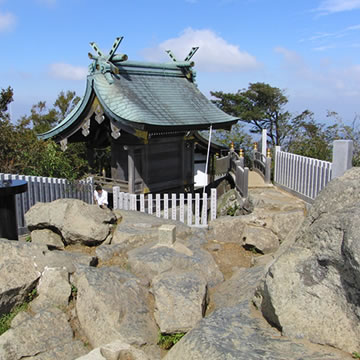
The small shrine on Mt.Tsukuba, Ibaraki Prefecture
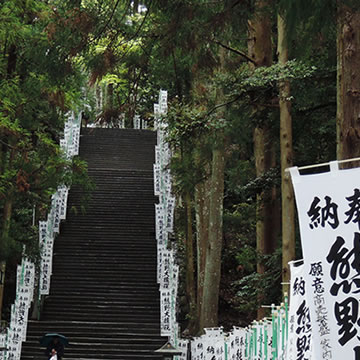
The stairway approach at Kumano Shrine in Wakayama Prefecture
Published in June 2018
This article is also available in Japanese

